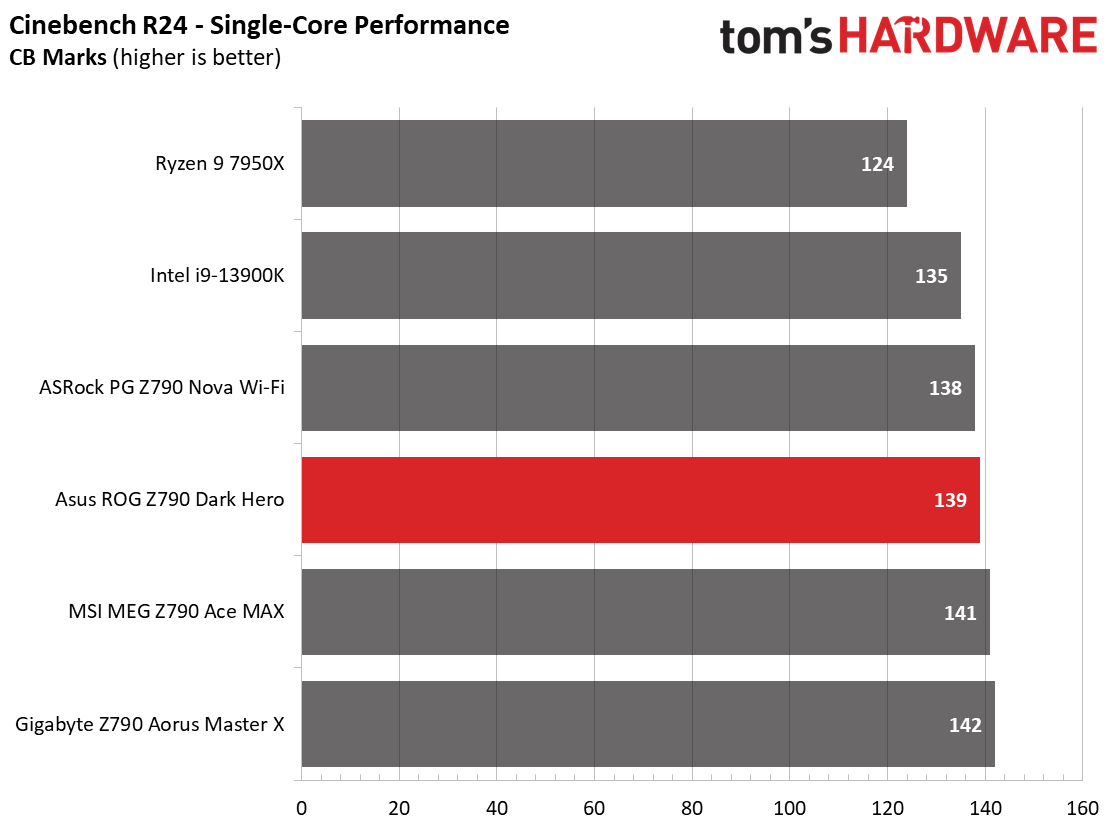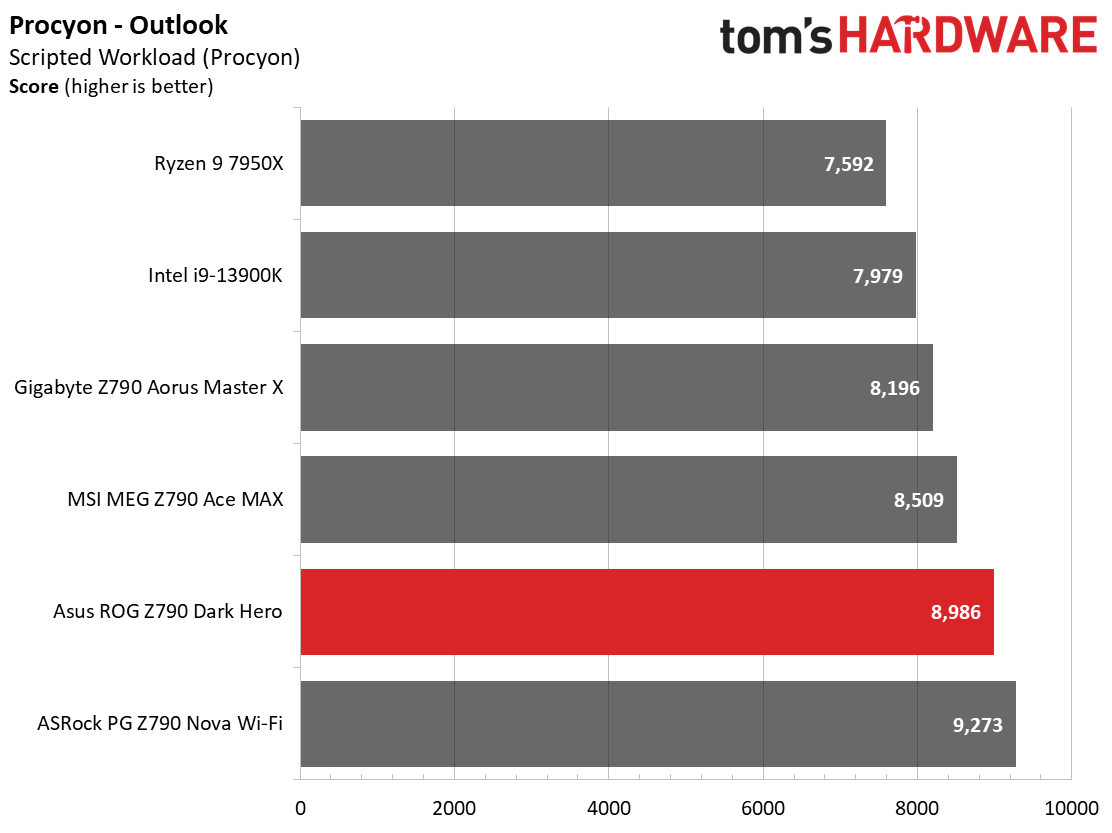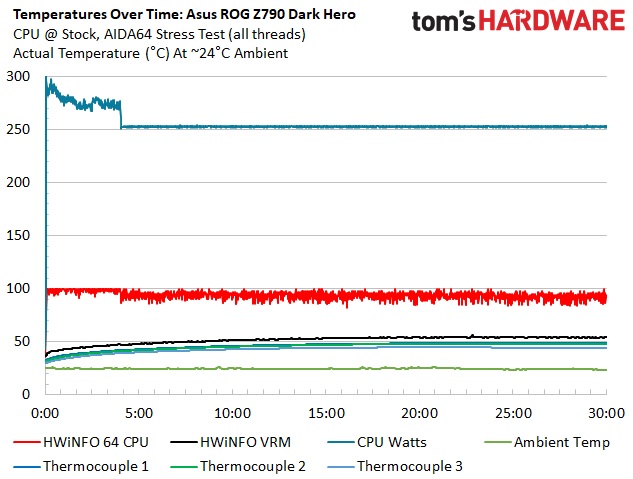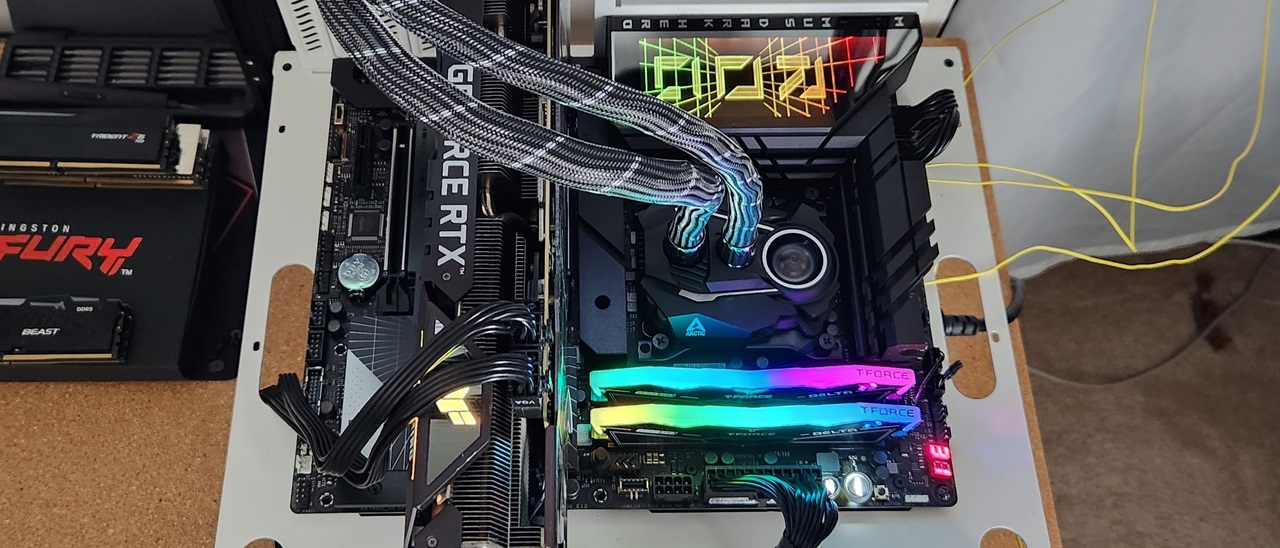Why you can trust Tom's Hardware
Our standard benchmarks and power tests are performed using the CPU’s stock frequencies (including any default boost/turbo), with all power-saving features enabled. We set optimized defaults in the BIOS and the memory by enabling the XMP profile. The Windows power scheme is set to Balanced (default) for this baseline testing, so the PC idles appropriately.
Synthetic Benchmarks
Synthetics provide a great way to determine how a board runs, as identical settings should produce similar performance results. Turbo boost wattage and advanced memory timings are places where motherboard makers can still optimize for stability or performance, though, and those settings can impact some testing.


















For the synthetic benchmarks, our Dark Hero did well overall, especially in the Procyon suite of tests. It was around average in the new CinebenchR24 and POV-Ray and on the slower side of our Blender datasets. Still, the added headroom the BIOS provides at default is a positive if you can keep the processor cool enough.
Timed Applications




In the Handbrake tests, our Z790 Dark Hero Aorus Master was one of the slower results so far, completing the tests in 85 and 233 seconds, respectively, for x264 and x264 tests. LAME testing showed our board tied as the fastest result thus far, matching the Aorus Master X and the Ace MAX times. Any of the slower results weren’t far off the average. You’d be hard-pressed to notice a difference in some of these timed real-world applications.
3D Games and 3DMark




Starting with the launch of Zen 4, we shifted our test games from F1 21 to F1 22 while keeping Far Cry 6. We run the games at 1920x1080 resolution using the Ultra preset (details listed above). As the resolution goes up, the CPU tends to have less impact. The goal with these settings is to determine if there are differences in performance at the most commonly used (and CPU/system bound) resolution with settings most people use or strive for (Ultra). We expect the difference between boards in these tests to be minor, with most falling within the margin of error differences. We’ve also added a minimum FPS value, which can affect your gameplay and immersion experience.
As a gamer, the Dark Hero is plenty competent. The scores in the 3DMark tests and FPS in our games show it right around the middle of the boards we’ve tested so far. Like the i9-13900K, the refresh i9-14900K is a great choice for a high-end gaming processor.
Overclocking
Generation after generation, overclocking headroom has been shrinking with both Intel and AMD processors, with motherboard partners pushing the limits to set themselves apart from the plethora of options available to the consumer. With the overclocking headroom all but gone now, we’ve left things at stock for cores, but will push the Integrated Memory Controller (IMC) for faster RAM. Remember, for 14th-gen CPUs, the maximum stock spec for memory is DDR5-6000 versus DDR5-5600 for 13th-gen. We have a DDR5-7200 kit in-house to test the higher speeds.
Get Tom's Hardware's best news and in-depth reviews, straight to your inbox.
Like the Aorus Master preceding this review, our memory kits worked without issue by enabling the XMP profiles. The board lists support up to DDR5-8000, with plenty of kits available on a growing QVL list (our Team Group kit was excluded but still worked). For those users who’d like to extract every MHz out of your hardware, the Dark Hero is a great place to do it.
Power Consumption / VRM Temperatures
We used AIDA64’s System Stability Test with Stress CPU, FPU, Cache and Memory enabled for power testing, using the peak power consumption value. The wattage reading is from the wall via a Kill-A-Watt meter to capture the entire PC (minus the monitor). The only variable that changes is the motherboard; all other parts remain the same. Please note we moved to using only the stock power use/VRM temperature charts. Since the system uses every available degree Celsius, unless you’re using a sub-ambient cooling solution, you’ll use more power and generate more heat using default settings.
Idle power consumption on the Dark Hero/i9-14900K combo settled around 59 Watts. This value is the lowest we’ve recorded on the new Z790 boards so far, even though the board is chock full of features. Load wattage peaked at 391W during the stress test for the system, about average for the current data sets.


VRM temperatures are well within specification, as you’d expect from the beefy VRM heatsinks and high-end SPS MOSFETs. Peaking around 300W and settling around 253W, the i9-14900K tried its best to get these things hot, but they kept their cool, never reaching 50 degrees Celsius in our 30-minute stress test.
Bottom Line
Asus’ ROG Maximus Z790 Dark Hero is a good-looking, full-featured motherboard that offers users the best of what the Z790 platform offers. Priced at a wallet-emptying $699.99 on Newegg, you get native 14th-gen support, ultra-fast integrated Wi-Fi 7, dual Thunderbolt 4 (40 Gbps) Type-C ports, five M.2 sockets (including a PCIe 5.0 x4 socket), robust power delivery and cooling, DIY-friendly design with Q-Slot and Q-Latch features, solid performance, and an updated premium appearance fit for a premium board. On paper and in practice, it has almost everything a user would want in a motherboard.
That said, it’s not perfect. The biggest gripe we have about the board, is price. At $699.99, you’re pushing into flagship-class territory. And while the premium users tend to pay for Asus products can be worth it (worth is in the eye of the beholder, remember), there are other similarly equipped options available for the same price, or less. MSI’s MEG Z790 Ace Max is also $699, but it’s an E-ATX size board that’s functionally the same as the non-MAX version. Gigabyte’s Z790 Aorus Master X ($549.99 at Newegg), is a solid contender sporting a 10GbE port, but lacks Thunderbolt 4 support. ASRock’s Taichi or Taichi Lite variants offer similar hardware, but are priced much less ($479.99 and $349.99 respectively) and are arguably the best of the bunch.
Overall, we like the updates Asus made to the Z790 Dark Hero. While it may not have made as many changes as Gigabyte, we’d still consider it an upgrade over the original Z790 Hero, especially if you’re averse to flashing the BIOS, or need Wi-Fi 7 capability in your ecosystem. If you can flash and don’t care for the fastest Wi-Fi around, you can save some money and go with the Z790 or even Z690 Hero and still get support for 14th-gen processors. Ultimately, if you’re in the market for a 12th, 13th, or 14th-gen processor and want the best the platform offers, the updated boards are where it’s at. Just be prepared to pay a premium for the fancy new hardware and designs.
MORE: Best Motherboards
MORE: How To Choose A Motherboard
MORE: All Motherboard Content

Joe Shields is a staff writer at Tom’s Hardware. He reviews motherboards and PC components.


